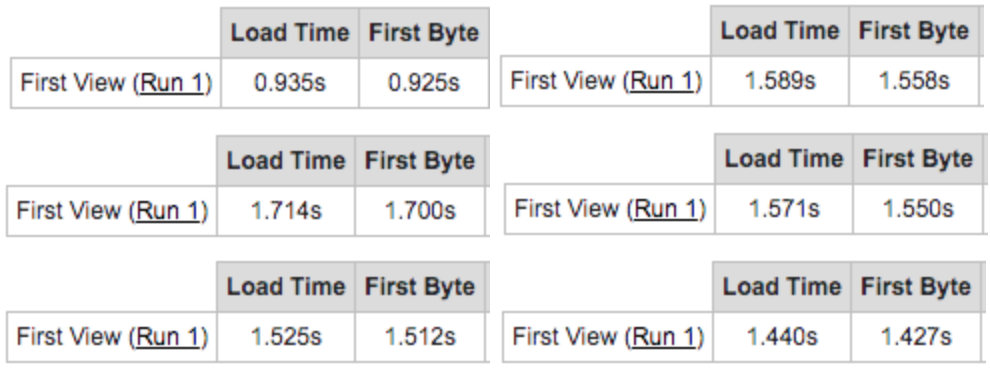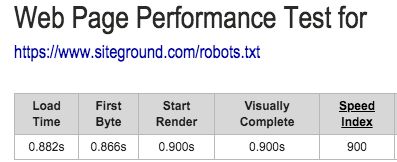This post was inspired by our bloggersSEO Support community. After investigating a number of our members sites, we noticed a common thread between those hosted with a popular WordPress host.
The time your blog takes to load has a significant impact on several different aspects of your online marketing – from user engagement all the way through to ad revenue. Not only is site speed arguably one of the most important ranking factors of today (if not THE most important!), its influence reaches across your site, with a positive impact on other valuable metrics such as time on site, pages per visit, bounce rates, and conversion rates
Improving your page speed is a great area for any site owner to explore. In fact, it’s one of the very first topics covered in SEO Superheroes. The benefits are felt across your site, and greatly increases the impact of many other improvements. There is a range of different tactics you can implement, and our specialist course guides you through understanding and implementing each technique.
Faster load times are felt by your audience immediately, letting you harness the true value of your existing audience, while Google takes a little longer to pick up on the adjustments and translate them into better rankings.
Understanding Time To First Byte
One of the most challenging speed measurements to successfully impact is your Time To First Byte or TTFB. This is the amount of time it takes for the server (where your website ‘lives’) to first respond to a browser request (a human accessing your content).
Before loading any page elements, such as images & text, or CSS stylesheets & JavaScript files, the TTFB measures the time it takes for the first byte of data to return to the user after clicking one of your links.
While techniques like image optimisation and file consolidation have a significant impact on your overall load speed, they won’t help improve a Time To First Byte problem. Diagnosing causes can be a sticky spot, but they’re typically related to a bloated database (this is usually caused by having too many plugins – we cover effective plugin management SEO Superheroes), or they’re server related, in which case you’ll need to hassle your hosting company to fix it for you (or if you have the access and the know-how, tinker with the server configuration yourself).
Do you have a TTFB problem?
Finding out is easy! Simply put your homepage URL into WebPageTest.org and let it run a speed test. It will display a big breakdown of your website’s load times for all the different resources required to put a page together. TTFB is given a lot of prominence and is one of the first numbers you’ll see listed.
Google recommends keeping your TTFB below 200ms – even in our eyes that’s crazy fast and the ideal number we strive for on own sites, and clients’ sites. However, 200ms is not always achievable, especially if you’ve migrated your site to HTTPS. The time it takes to authenticate an SSL certificate adds a small amount to your TTFB, but the benefits FAR outweigh the minimal increase. Because of this, we set a realistic standard of 500ms. If your TTFB is over 500ms, you might want to look at reducing it. If your TTFB is over 1 second, you NEED to reduce it ASAP.
Finding the solution
You won’t get very far with fixing your TTFB without doing a bit of digging first. Narrowing down the cause behind the issue is the first step – is it your hosting company? Or a particular plugin? Maybe it’s actually two, or fifty!
To determine if your hosting is the culprit, run WebPageTest.org over your homepage (yourblog.com/). Then, run it over your robots.txt file (yourdomain.com/robots.txt). If the TTFB is quite similar for both, the issue is actually with your hosting company! This is because your robots.txt is a static file that doesn’t require any processing to create, and should always load quickly – a slow load time points to an external issue!
Below are REAL results from our blogging community, and the TTFB for their robots.txt files. All are hosted with the same popular company (not WP Engine!) and only one of our sample blogs is even close to an ideal speed – and these are some of our more advanced members, who actively improve their site!

After seeing a number of sites with such poor TTFBs for their robots.txt, it was clear the hosting company was to blame – so we put them to the test! Their own site responds faster than any of our bloggers paying to use their service, but still 400% slower than Google’s recommended speed!

The Road to Recovery
If you’ve identified your hosting company as the culprit, you can potentially contact their support team to see what they may be able to do to help. Alternatively, you can switch to another host! We can’t get enough of WP Engine, and not only does it significantly improve TTFB, there is a whole range of additional benefits!
Not only are they fast (use webpagetest.org to test our website and see for yourself), but they’ve got a big range of features that we love – particularly the staging server, an area where you can trial and error any development or design changes you’d like to make, before pushing it to your live website. This avoids impacting the user experience, as well as giving you free reign to break anything you like with it being reversible with a click of a button.
If your blog is limited by poor hosting, the solution is easy!
Our SEO Superheroes course shows you how to identify, resolve and implement all areas covered in this post (and many others!) PLUS effectively reaching your audience, performance-boosting your content and a whole heap more! Oh, and you get our HTTPS and WP Engine Migration classes AND SEO Essentials mini course thrown in for FREE!
Ready to join our #SEOSuperSquad? We’re waiting for you!
